For too long, we’ve been wiping and wiping.. The use of toilet paper alone as a means of personal hygiene can lead to several problems. Wiping with toilet paper repeatedly can cause skin irritation, tearing, and buildup of skin. A bidet can help to alleviate these issues by providing a more thorough clean and reducing the need for excessive wiping. It is a convenient, fast and hygienic way of cleaning oneself after using the toilet.
Using trees to make toilet paper is an ecological catastrophe. You’ve probably seen the statistic that 27,000 trees are cut down each day to make toilet paper — a big number to be sure, but what does it mean? Any tree is better off left standing than flushed down the toilet, but not all trees, and not all forests, are created equal.
Most toilet paper sold in the U.S. and Canada contains a significant percentage of pulp derived from old-growth virgin trees found in the Canadian Boreal Forest. This forest, which spans Canada (and the rest of the northern hemisphere) just below the Arctic circle, is the world’s most important carbon sink. It stores more carbon than all of the world’s gas, coal and oil reserves combined, and removes carbon dioxide from the atmosphere equivalent to the annual emissions of 24 million passenger vehicles.
The effects of clear-cutting such forests are staggering. Clear-cutting the Canadian Boreal Forest releases 26 million metric tons of carbon dioxide each year. While portions of this forest are replanted, even those that adhere to FSC (Forest Stewardship Council) regulations can take more than 100 years to return to their original state, and many never do. Old growth forests are one of the planet’s most important bulwarks against catastrophic climate change, but it has come under sustained assault by the tree paper industry.
All of this is to say nothing of the impact on indigenous communities in the Boreal region (of which there are over 600) or of wildlife populations (caribou, marten, lynx, and migratory birds in particular) whose numbers have declined precipitously in the last 25 years as their habitats have disappeared.
Tree paper is equally alarming from a human health perspective. It isn’t easy turning big, old trees into soft, fluffy paper. In fact, it takes over a gallon of chemicals per roll, including bleaching agents, formaldehyde, and a handful of known carcinogens. While these chemicals are present in amounts that don’t exceed current FDA regulations, an ever-expanding body of research indicates that toilet paper made with such chemicals is the cause of urinary tract infections, vulvar irritation, hemorrhoids, and a host of other maladies we’d all prefer to avoid.
Despite the ubiquity of toilet paper in our lives, there’s only a small handful of companies who actually produce the stuff, and as a result they hold outsize decision-making power over what products we introduce into our most precious environments.
Bidets are considered to be a better option than toilet paper or wet wipes for several reasons.
First, bidets provide a more thorough and effective cleanse. Unlike toilet paper or wet wipes, which can only remove surface dirt and debris, bidets use a stream of water to cleanse and refresh the entire area. This helps to remove any remaining waste or bacteria, leaving you feeling clean and refreshed. In contrast, toilet paper and wet wipes can sometimes leave behind residue and bacteria, which can cause irritation and discomfort.
Second, bidets are more gentle and hygienic. Because they use water instead of rough paper or chemicals, bidets are gentler on the skin and more effective at removing bacteria. This is particularly important for people with sensitive skin or medical conditions that require extra care, such as hemorrhoids or yeast infections.
Third, bidets are more environmentally friendly and sustainable. Because they use less water and reduce the amount of paper waste, bidets are a more sustainable option for bathroom hygiene. In contrast, toilet paper and wet wipes require trees to be cut down, create pollution during manufacturing, and contribute to landfill waste.
Overall, bidets offer a combination of effectiveness, gentleness, and sustainability that make them a superior option to toilet paper and wet wipes.
The water utilized in the Aquaus 360 bidet is sourced from the same water supply that you use for showering and handwashing. Rest assured, bidet water comes directly from your home water supply and is sanitary the water is not sourced from the toilet tank. Instead, the bidet attachment is connected to the clean water line located behind your toilet, ensuring a direct and sanitary water supply for your bidet experience.
There are several ways to use the Aquaus 360 spray wand depending on your body size and type of toilet (elongated or round). One way to use the 2.5″ or 5″ spray heads is to slide forward on the toilet seat and rinse from the back. Hold the sprayer so you can spray up and under your bottom target area, you can lean forward and turn your wrist a little to rinse down between your butt cheeks, starting from the top and rinsing down in a small circular motion. This method of rinsing from the back will also prevent water from spraying under the toilet seat gap if the pressure is too strong.
To rinse from the front, there are also several options depending on your toilet type and body size. For some people, using the 2.5″ or 5″ spray head will be sufficient. However, others may need to use the 5″ extension with the 2.5″ or 5″ spray head attached for a full 11 inch spray reach.
For female use, it is best to always rinse in a downward direction to prevent water from spraying under the toilet seat gap. It is also important to get a feel for the thumb pressure controls to easily adjust the spray pressure with your thumbs.

The Aquaus 360 bidet is available in two variations of spray wand handles: ABS polymer and solid Brass. The ABS polymer handle is lightweight and made of Acrylonitrile Butadiene Styrene, which is durable, corrosion-resistant, and cost-effective. The Brass handle, on the other hand, is made of solid forged brass, a strong and corrosion-resistant metal that is more suitable for those seeking a high-end, durable option that will last a lifetime. Both variations feature a Stainless Steel hose and a Brass T-Valve that is CUPC certified, making them legal for installation in the US and Canada. Both the Polymer and Brass Spray Wands come with a heavy chrome finish, a brass valve core with ceramic disc seals, and two interchangeable spray heads with a choice of 1/2” and 1” diameter spray plates, as well as a 5” inch extension for an extended spray reach of 3” to 11” inches, catering to all body sizes and uses.
While the material of the handle is the main difference between the two models, there may be other subtle differences such as the weight, durability over time, and aesthetic appeal. The ABS model weighs 80 g while the Brass model weighs 320g.
Overall, the difference between the ABS and Brass spray wand models of the Aquaus 360 bidet is primarily the material of the spray wand handle. The hose and toilet adapter parts are identical in both models. It mostly comes down to personal preference, as some customers prefer the lightweight and affordable ABS model, while others prefer the heavier, more expensive Brass model.
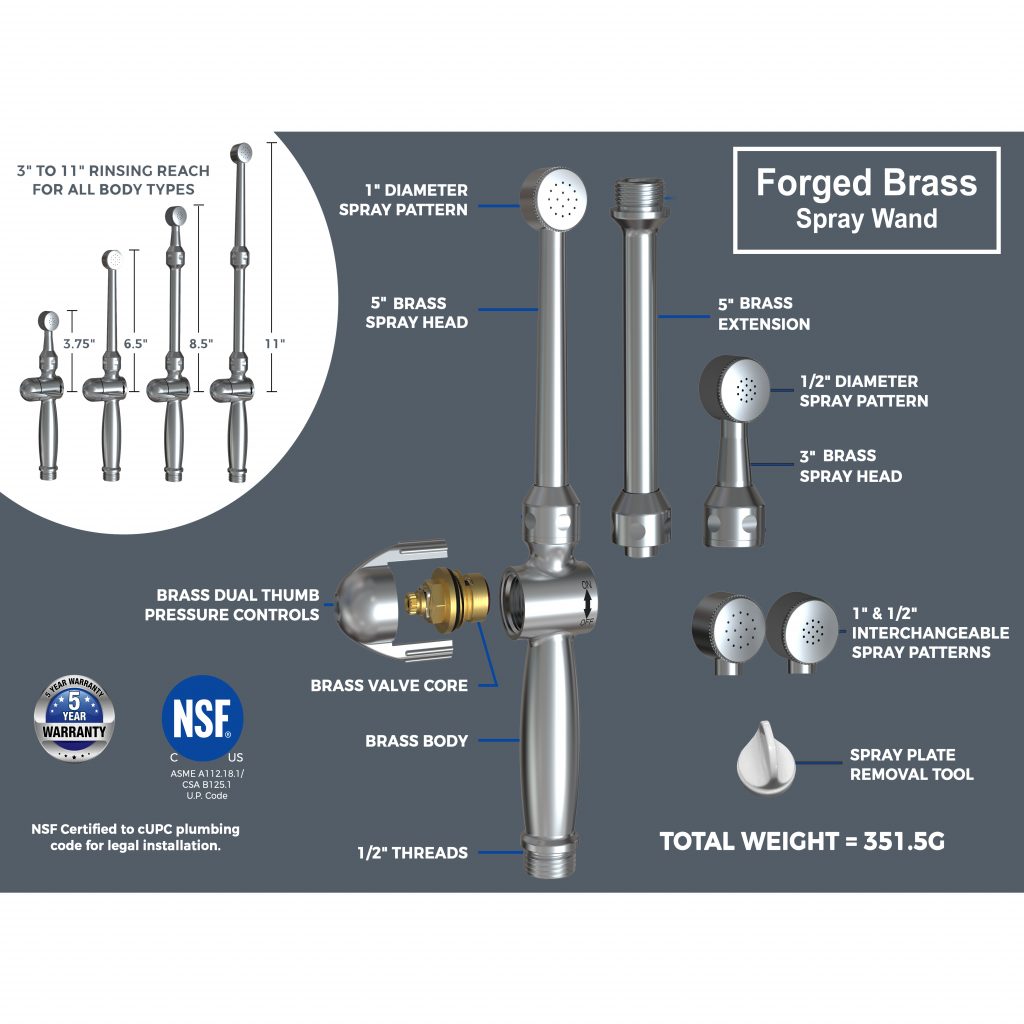
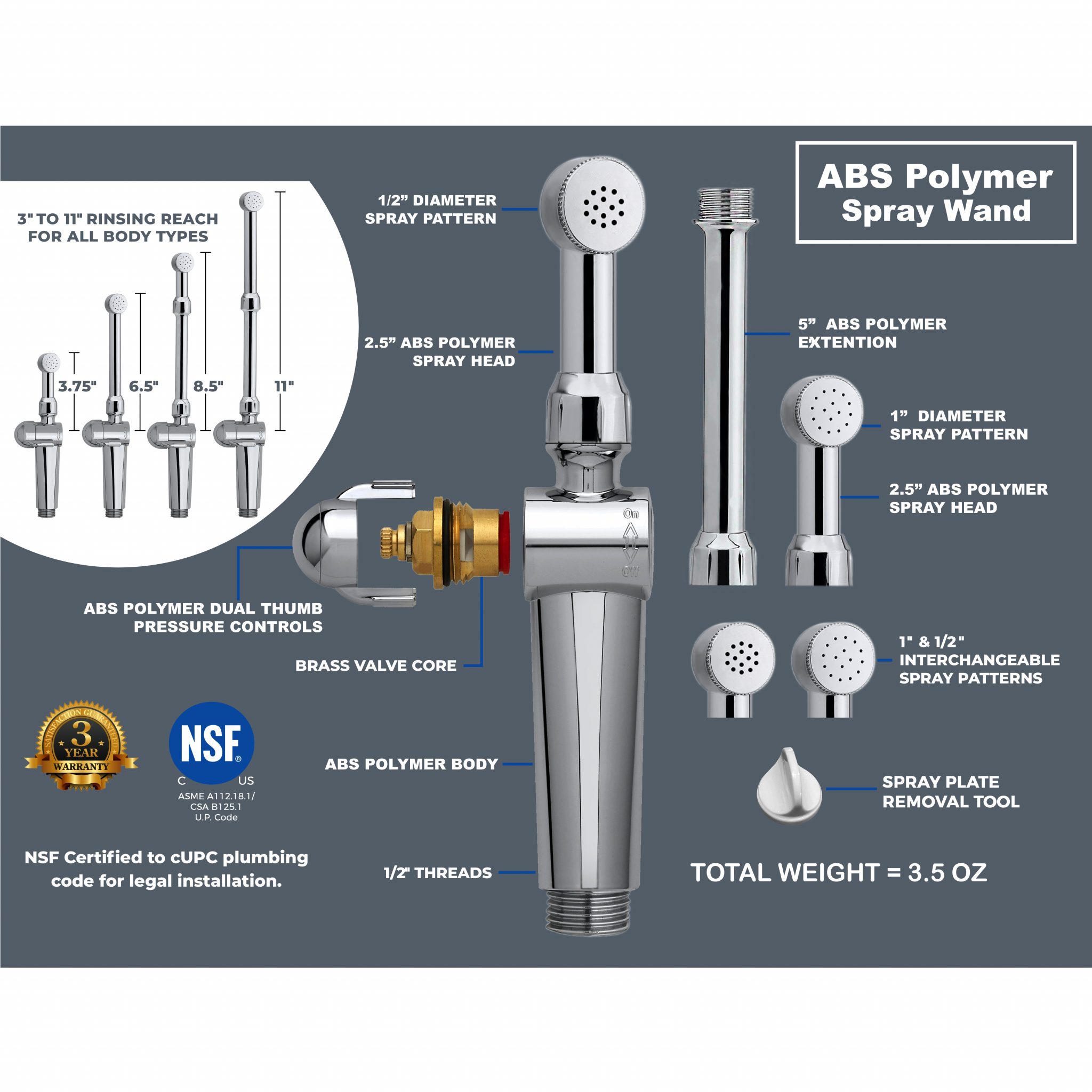
To keep your Aquaus 360 bidet clean and free of germs and bacteria, it is important to clean it regularly. The frequency of cleaning will depend on factors such as how often the bidet is used and the water quality in your area, but a good rule of thumb is to clean it at least 1-2 times a month.
Cleaning your bidet is easy and can be done by following these steps:
-
Mix a solution of mild, non-abrasive soap and warm water or a 50/50 water vinegar solution.
-
Use the spray plate removal tool to unscrew the spray plate and soak it in white distilled vinegar. You can use a small cleaning brush to clean the inside of the spray head. Once you have finished cleaning, screw the spray plate back onto the spray head.
-
Use a soft cloth or sponge to gently wipe down the bidet, including the spray wand, bidet hose, and valve.
-
Rinse the bidet thoroughly with clean water to remove any soap residue.
-
Dry the bidet thoroughly with a soft, clean cloth.
It is important to avoid using abrasive cleaners or scrubbing too aggressively, as this could damage the surface of the bidet. Do not clean the Aquaus parts, including the stainless steel hose or chrome finishes, with products that contain bleach or ammonia, as these can cause damage to the finish or discolor the stainless steel hose.
Yes, the Aquaus 360 comes equipped with two pre-installed cUPC-certified backflow preventers, which are required for legal installation in the United States and Canada. All handheld bidets should have these backflow preventers installed to meet plumbing code requirements.
Yes, The Aquaus 360 is a handheld bidet that allows you to mount the spray wand on the left or right side of the toilet, depending on your preference. This provides flexibility in placement and allows for easy access to the spray wand.
The Aquaus 360 bidet for toilet, faucet, and shower are cUPC-certified and come equipped with two cUPC-certified backflow preventers, which are required for legal installation in the United States and Canada. These backflow preventers help prevent contamination of the water supply by preventing the flow of water in the opposite direction.
Currently, the Aquaus 360 bidet only comes in a chrome-plated finish, known for its longevity and corrosion resistance, attributes that make it a favored option for bathroom installations.
In the forthcoming months, we anticipate introducing additional finishes, including matte black, brushed nickel, and gold.
We usually do not ship outside of the USA, Mexico, and Canada due to possible adaption issues.
However, if you have the correct connections to install our product we would be more than happy to accept your order.
If you are trying to place an order outside of North America please email us at Help@rinseworks.com
Please see the Shipping Policy
Please see the Return And Refund Policy
There are 3 basic types of Bidets –
- Built in-
- Toilet seat attachments –
- Handheld Bidets
RinseWorks only sells Handheld Bidets for the below reasons –
- Has the most flexibilities of uses like rinsing the toilet after you go and bathroom cleaning especially if used with the Aquaus SprayMate.
- Allows you to rinse from the front and back
- Easily installs on standard type toilets
- Easily connects to faucets & showers for warm a water bidet without tapping into your pipes.
- Has the least amount of parts to break
- Not in the way when cleaning the toilet
Below is a comparison chart!
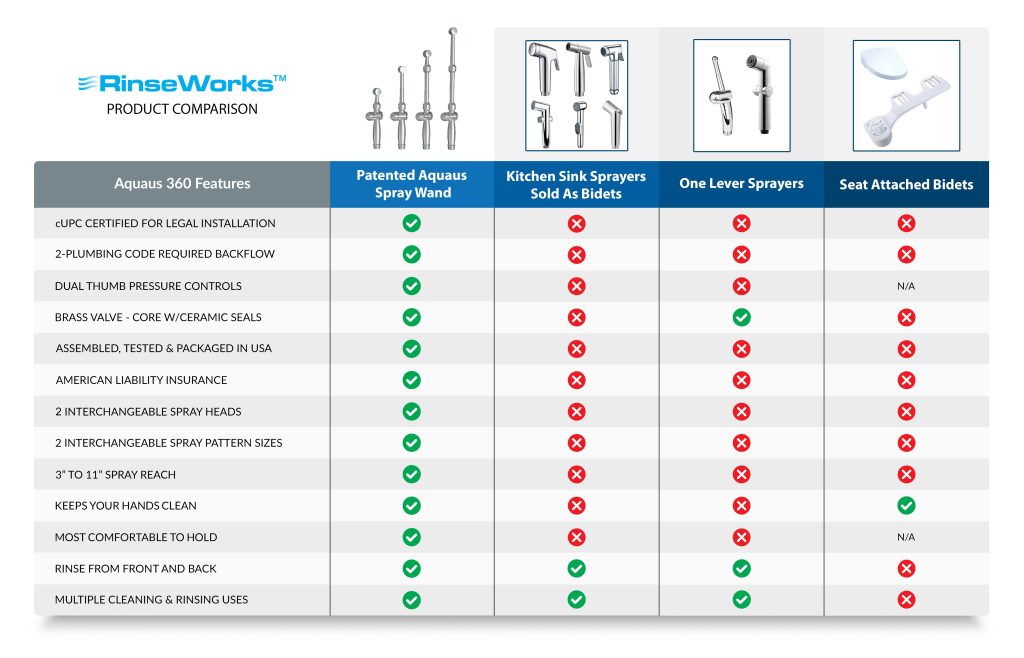
The Aquaus 360 easily connects to faucets, toilets and showers.
- The Aquaus for Toilet connect to most standard type toilets and will only have temped water temperature.
- The Aquaus for faucet and shower allow you to have a warm water bidet without tapping into the pipes under your sink.
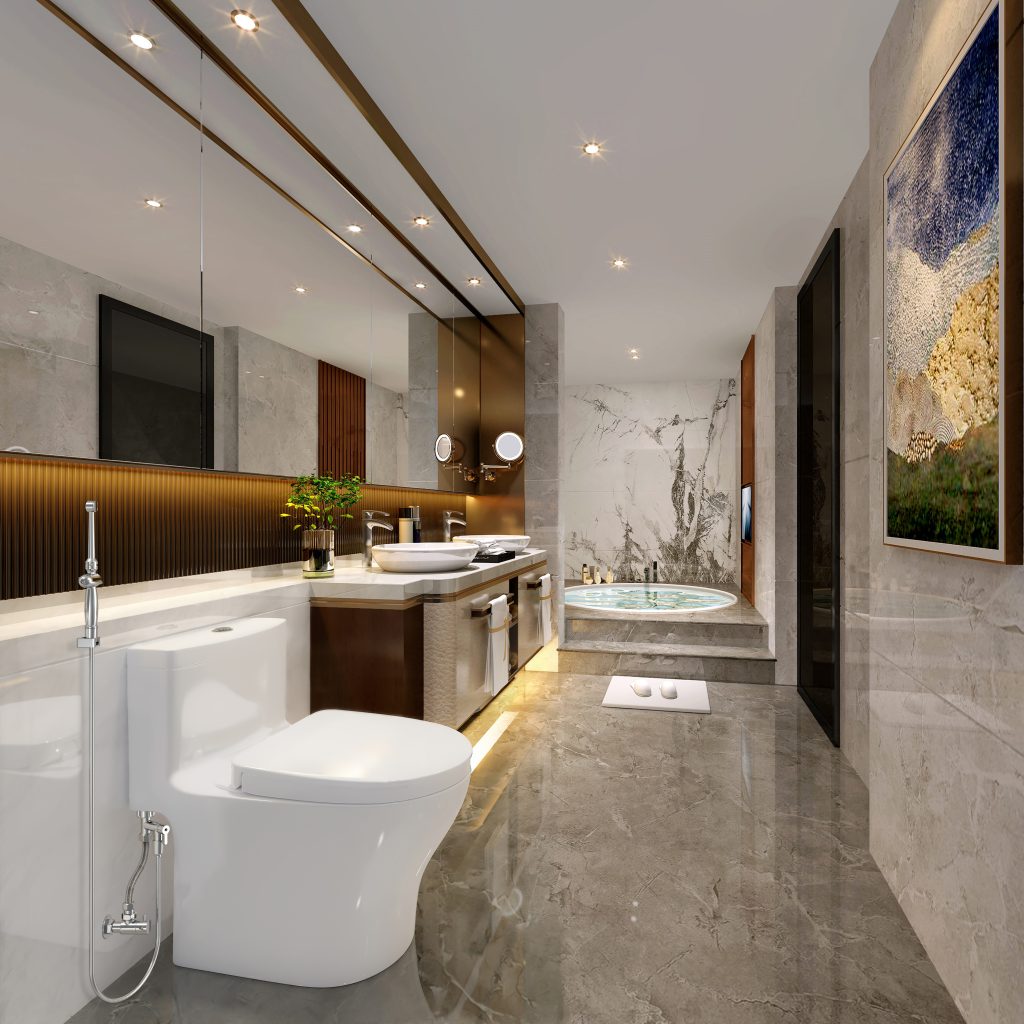
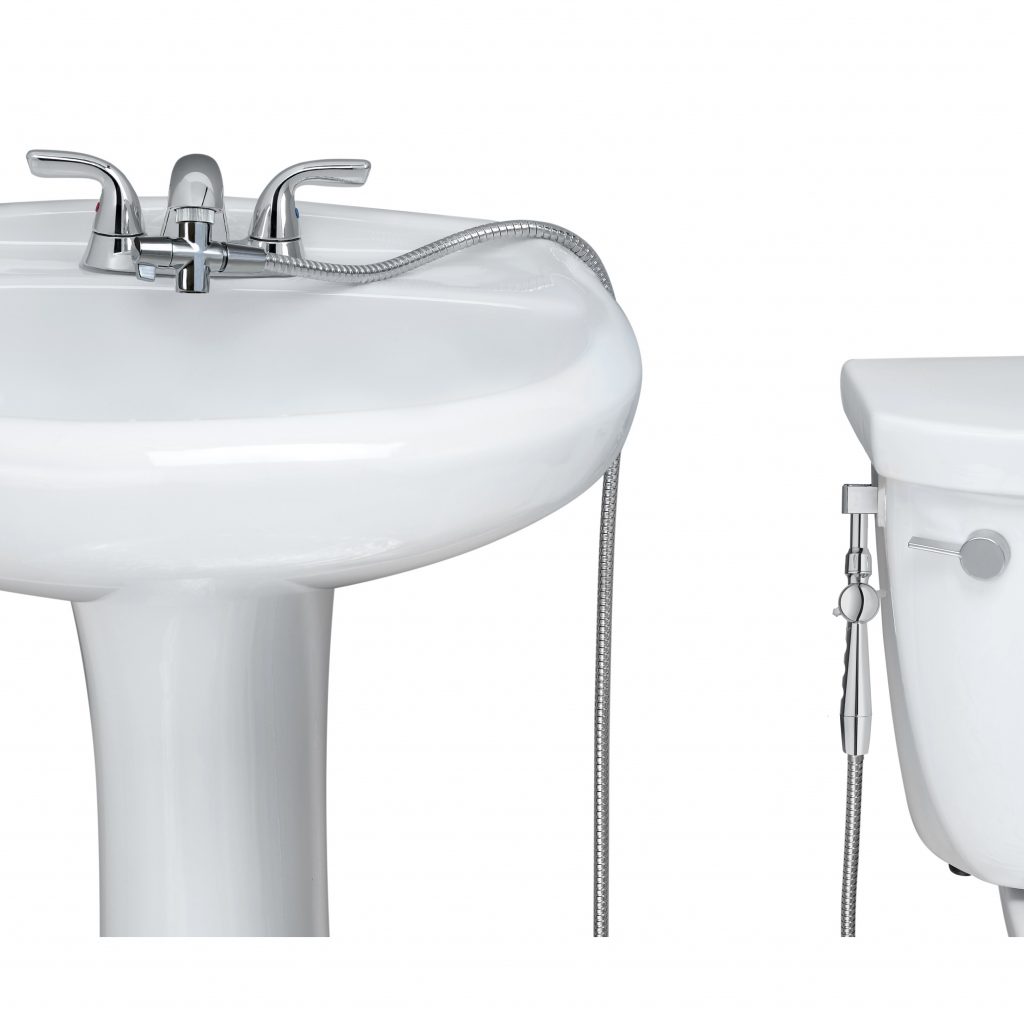
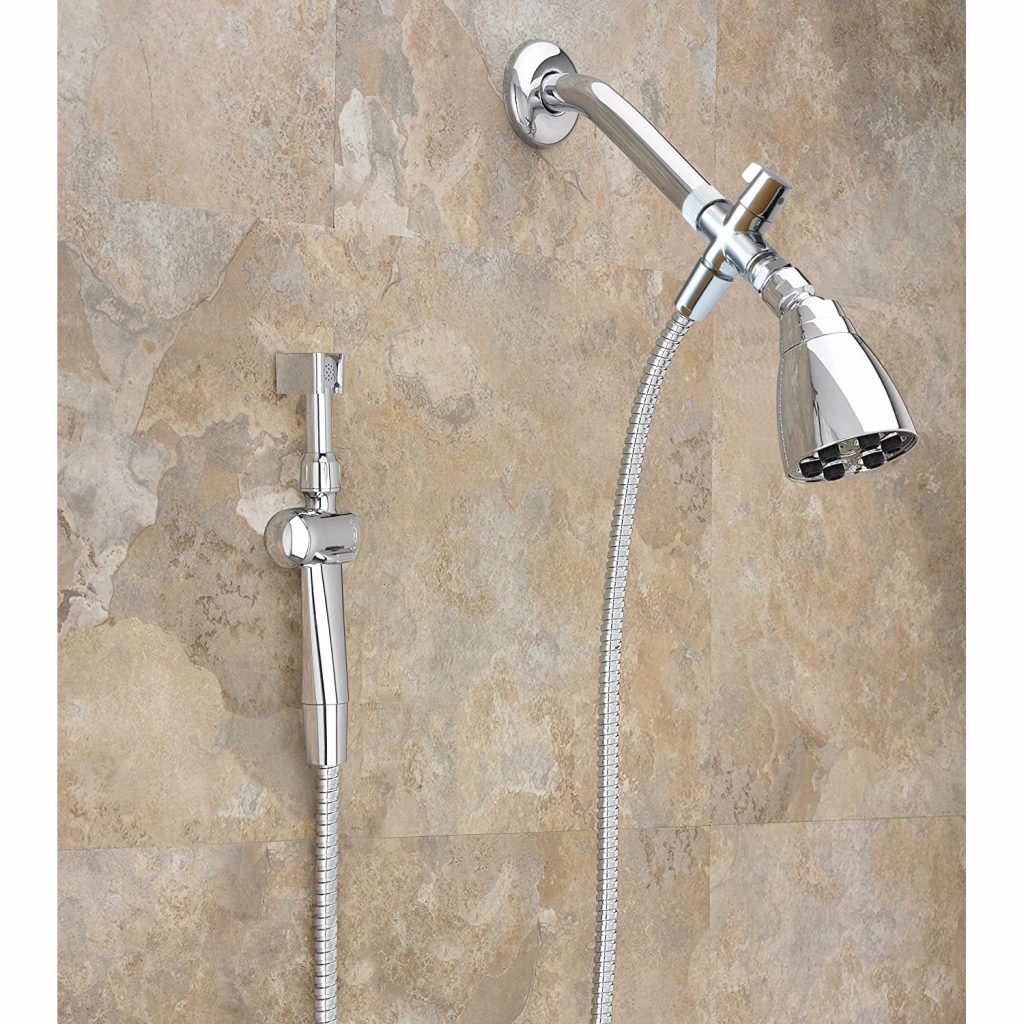
The Aquaus 360 bidet systems are compatible for the majority of homes. Please refer to the installation videos for guidance.
Installation
Yes, the Aquaus 360 will install on elongated or round toilets
Yes, the 2 interchangeable spray heads have 1’’and ½’’ interchangeable spray patterns.
Certainly, you have the option to adjust the spray pressure, ranging from a gentle rinse to a powerful jet spray. Additionally, the Aquaus 360 enables you to control the spray pressure using your thumb from both sides of the sprayer. This feature allows for easy switching between spraying upwards and downwards by simply flipping it over.
Yes, like any new device it takes a little practice to get the feel of it, but once you do it is the easiest way to stay fresh and clean after you go.
The Aquaus 360° Hand Held Bidet comes with a 3-year warranty on the ABS polymer sprayer and a 5-year warranty on the brass sprayer from the date of purchase. This warranty ensures that the products are free from defects and problems. All RinseWorks products are assembled, tested, and packaged in the United States to ensure the highest quality. This not only ensures that you receive top-quality products, but also supports job creation in the United States
Our StayFlex bidet hose comes in three lengths: 48″, 54″, and 96″. To order a hose of a specific length, please see below.
48″ Aquaus StayFlex Stainless Steel Hose – NSF Certified
54″ Aquaus StayFlex Stainless Steel Hose – NSF Certified
96″ Aquaus StayFlex Stainless Steel Hose – NSF Certified
It’s worth noting that while our hose connections are 1/2″, the StayFlex hose is not your typical shower hose. It important to use the proper bidet hose and parts with a pressurized bidet system.
There’s a difference between a bidet hose and a shower hose.
Using a bidet sprayer with a regular shower hose is dangerous because shower hoses have a soft inner tube and were not made to be pressurized; they were only designed for water to pass through them. Shower hoses are not designed to withstand the constant pressure of a bidet and using a shower hose as a bidet hose is risky because they will eventually burst. RinseWorks Stainless Steel StayFlex hose is specifically made to be used with handheld bidets and designed to stay totally flexible under pressure. The Internal polymer hose is infused with a braided nylon mesh that will not inflate or burst under pressure. Most other hoses on the market become stiff and difficult to maneuver once pressurized due to their “flow-thru” design. For safety and optimal usability, we highly recommend sticking with the StayFlex bidet hose.
The Aquaus Bidet and diaper sprayer are the same system, just for a different market or retail store.
The bidet sprayer and diaper sprayer systems have the same components; the only difference between them is the paper insert.
One is targeted for the bidet market, while the other caters to the diaper sprayer market.
Yes, please go to the Aquaus for faucet page here.
Bidet For Toilet
The Aquaus 360 Bidet For Toilet uses 7/8″ threads and was designed for home use only. Most RV toilets use 1/2″ toilet threads. However, we do have a ½” valve provided below that could work for you.
Aquaus Shower Diverter Valve For StayFlex Stainless Steel Hose
If you purchased the bidet for toilet system for your RV and need the 1/2″ valve we will be happy to swap out the 7/8” toilet adapter to the ½” valve
Bidet For Faucet
Yes- The Aquaus for faucet will fit most RV faucets with a removable sink aerator.
Please see the Aquaus 360 bidet for faucet installation video below
The Aquaus 360 is very easy to install for most people and does not require any tools or a plumber. RinseWorks will also be happy to answer any questions you have about installing your bidet system.
Please watch the Aquaus 360 bidet for toilet installation video provided below
The Aquaus 360 bidet for toilet system needs an accessible water supply line connection for the T-Valve to screw on. Please watch the installation video
However, the Aquaus 360 bidet for faucet and shower can be used with a tankless toilet.
https://rinseworks.com/product-category/bidet-for-faucet/
https://rinseworks.com/product-category/bidet-for-shower/
Investing in plumbing products that meet stringent code certifications does come with a higher price tag, but the value and peace of mind they offer are immeasurable. When you choose high-quality products for your home, you’re not just making a purchase; you’re investing in long-term satisfaction and safety.
RinseWorks stands proudly as an American company, with over 25 years of experience designing high quality plumbing products. Our commitment to excellence is underscored by robust American Liability insurance, ensuring that every product you bring into your home meets the highest standards of quality and reliability.
To learn why low priced and low-quality kitchen sink sprayers should not be used as a handheld bidet watch this video.
All low priced handheld bidets include a kitchen sink sprayers made with a spring valve and shower hose not designed to be pressurized. For this reason, RinseWorks does not sell spring valve sprayers or use low quality showers hoses and t-valve not certified to the plumbing code.
Below is a Comparison between the Aquaus 360 Handheld Bidet, Kitchen Sink Sprayer Bidets, and Seat Attached Bidets. Which Bidet system offers you the most features, is the easiest to use, most reliable, longest lasting, approved for legal installation, most flexibility of uses, and highest quality.

Kitchen Sink Sprayers
- Made for cleaning dishes and not for rinsing under your front and back bottom areas while sitting on the toilet.
- Gun shaped body makes sink sprayers very difficult, awkward and uncomfortable to hold without getting your hand wet and messy as you rinse.
- Made with a spring valve not designed to be fully pressurized, making them prone to leaking and a short life span, especially if left under pressure.
- Very high odds of leaking if you forget and leave it under pressure.
Not easy to adjust the spray pressure making precision rinsing difficult. - Spring valves work by a small spring pushing a soft rubber seal closed so the only part holding back the water pressure is a small spring.
Seat Attached Bidets
- Only sprays from the back.
- Cannot be used for any other cleaning uses.
- Difficult for female use because they only sprays from the back which, can cause urinary tract infections when rinsing from the back to the front.
- Require the removal of the toilet seat to clean under them.
- Has many parts that can malfunction and fail.
- Some models need an electrical plug behind the toilet.
- No safety shut-off valve.
Aquaus 360° Spray Wand
- The revolutionary new Patented Aquaus 360° was specifically designed as a Bidet sprayer for simple all-natural personal hygiene.
- Unique, ergonomic design with Precision rinsing allows you to rinse under your front and back bottom areas while comfortably sitting on the toilet without getting your hand wet and messy.
- Has a Brass valve core with ceramic disc seals same as used in Kitchen and Bathroom faucets for safe, reliable use in your home.
- Brass valve cores have a lifespan of over 10 years and can be easily replaced, so you never need to purchase a new sprayer.
- Very low odds of leaking if you forget and leave it under pressure.
- The only Handheld Bidet Sprayer NSF Tested and Approved for Legal installation in the USA & Canada.
- Includes 2 Plumbing Code Required Back-flow Protectors to prevent contaminating the drinking water supply if a back-flow event occurred.
- Dual thumb pressure controls allow you to comfortably hold and control the spray pressure from both sides.
- Easily rinse up and down by simply flipping the sprayer over.
- 3 interchangeable spray heads and 5’’ inch extension gives you a 3’’ to 11’’ inch spray reach for all body sizes.
- ½’’ and 1’’ inch spray patterns options for the perfect cleaning experience.
- Made in the USA with domestic and global components.
- Patented in the USA with International Patents Pending.
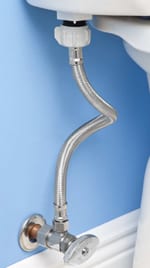
Please Note
To install the Aquaus toilet adapter correctly, your toilet must have a flexible water supply line. If your current water supply line is not flexible, you can watch our video on How to Replace Your Hard Water Supply Line. It is a simple process, and flexible water supply lines can be purchased at most hardware stores for around $7.
To install the Aquaus 360 system onto your toilet, access is required to install the toilet adapter onto the bottom of the toilet’s fill valve threads, located at the opposite end of the water supply line connection.
If accessing the toilet valve directly proves difficult, you can enhance accessibility by utilizing a water supply line extension, a mixing valve for under your sink, or opting for a 3/8” valve to connect to the toilet’s main shut-off valve.
You can find these products at the following links:
Check inside the tank to see if the flusher valve turned during installation and the fill float is pushing against the side of the tank.
Sounds like the flap in the toilet tank is leaking. But there are several reasons causing this sound, but the installation of the Aquaus bidet should not cause any water to be running. Please contact customer service and we will be happy to help you.
Certainly, installing and uninstalling the Aquaus 360 bidet systems is straightforward. Should the need arise to relocate it to a new location, the process is equally uncomplicated.
The spray wand holder is designed to offer versatile placement options. The clip can be detached and the holder can be mounted on a wall or vanity using a wood screw or wall mount assembly (not included). Additionally, the holder can also be attached to tile or smooth surfaces using a strong double-sided adhesive tape.
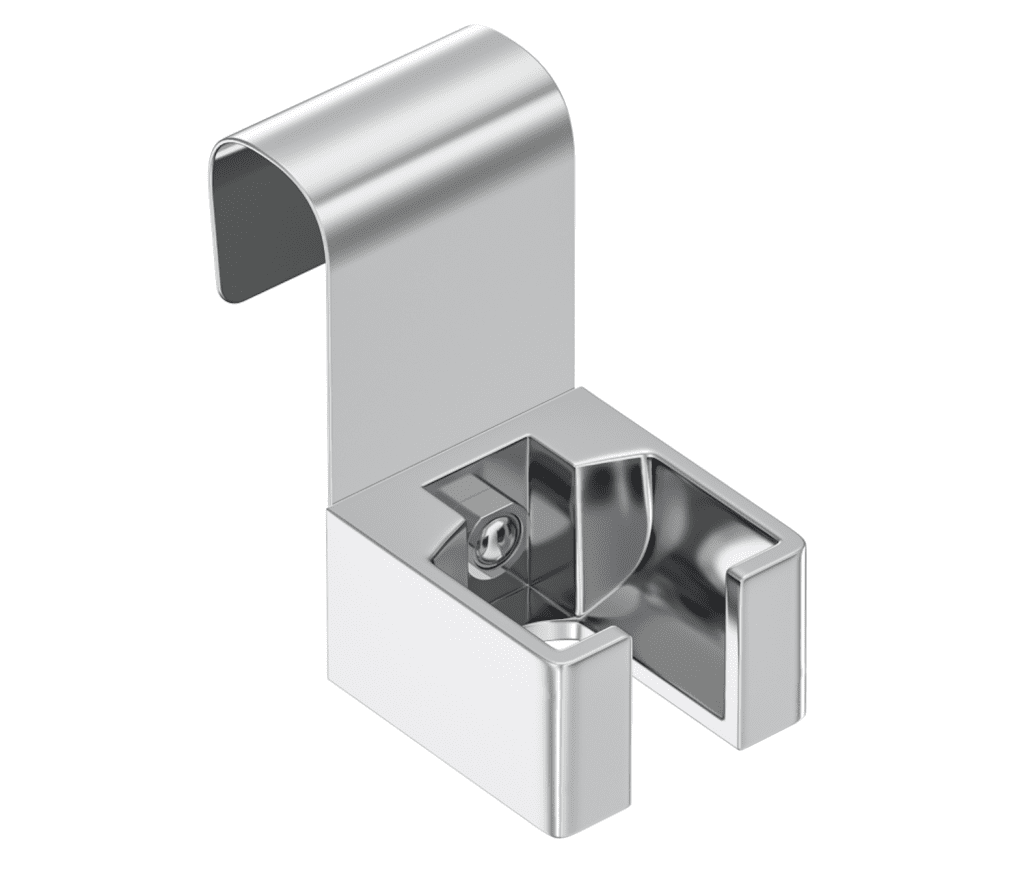
Yes, if the toilets are standard American type toilets with a 7/8’’ male tank water line threads.

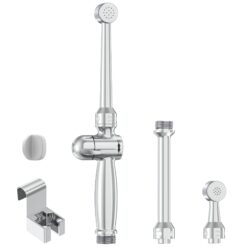 Aquaus 360° Spray Wand With 5-In Extension For Extended Reach - Brass Sprayer
Aquaus 360° Spray Wand With 5-In Extension For Extended Reach - Brass Sprayer 